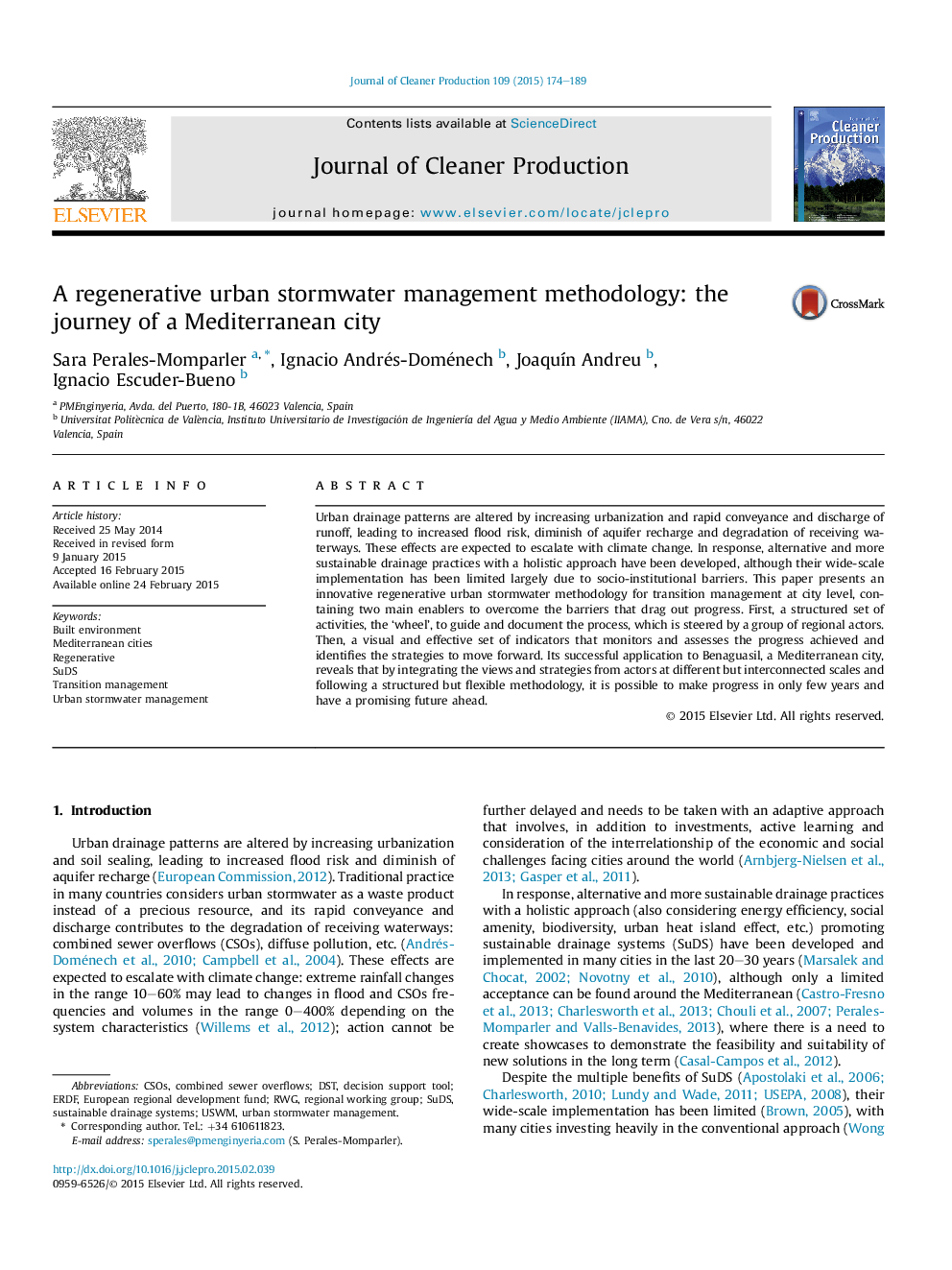| Article ID | Journal | Published Year | Pages | File Type |
|---|---|---|---|---|
| 1744506 | Journal of Cleaner Production | 2015 | 16 Pages |
•Regenerative urban stormwater management methodology for transitions at city level.•The journey of a Mediterranean city towards a regenerative urban built environment.•A group of regional actors ‘steer the wheel’ to guide and document the transition.•A set of indicators to assess progress and identify institutional work.
Urban drainage patterns are altered by increasing urbanization and rapid conveyance and discharge of runoff, leading to increased flood risk, diminish of aquifer recharge and degradation of receiving waterways. These effects are expected to escalate with climate change. In response, alternative and more sustainable drainage practices with a holistic approach have been developed, although their wide-scale implementation has been limited largely due to socio-institutional barriers. This paper presents an innovative regenerative urban stormwater methodology for transition management at city level, containing two main enablers to overcome the barriers that drag out progress. First, a structured set of activities, the ‘wheel’, to guide and document the process, which is steered by a group of regional actors. Then, a visual and effective set of indicators that monitors and assesses the progress achieved and identifies the strategies to move forward. Its successful application to Benaguasil, a Mediterranean city, reveals that by integrating the views and strategies from actors at different but interconnected scales and following a structured but flexible methodology, it is possible to make progress in only few years and have a promising future ahead.
